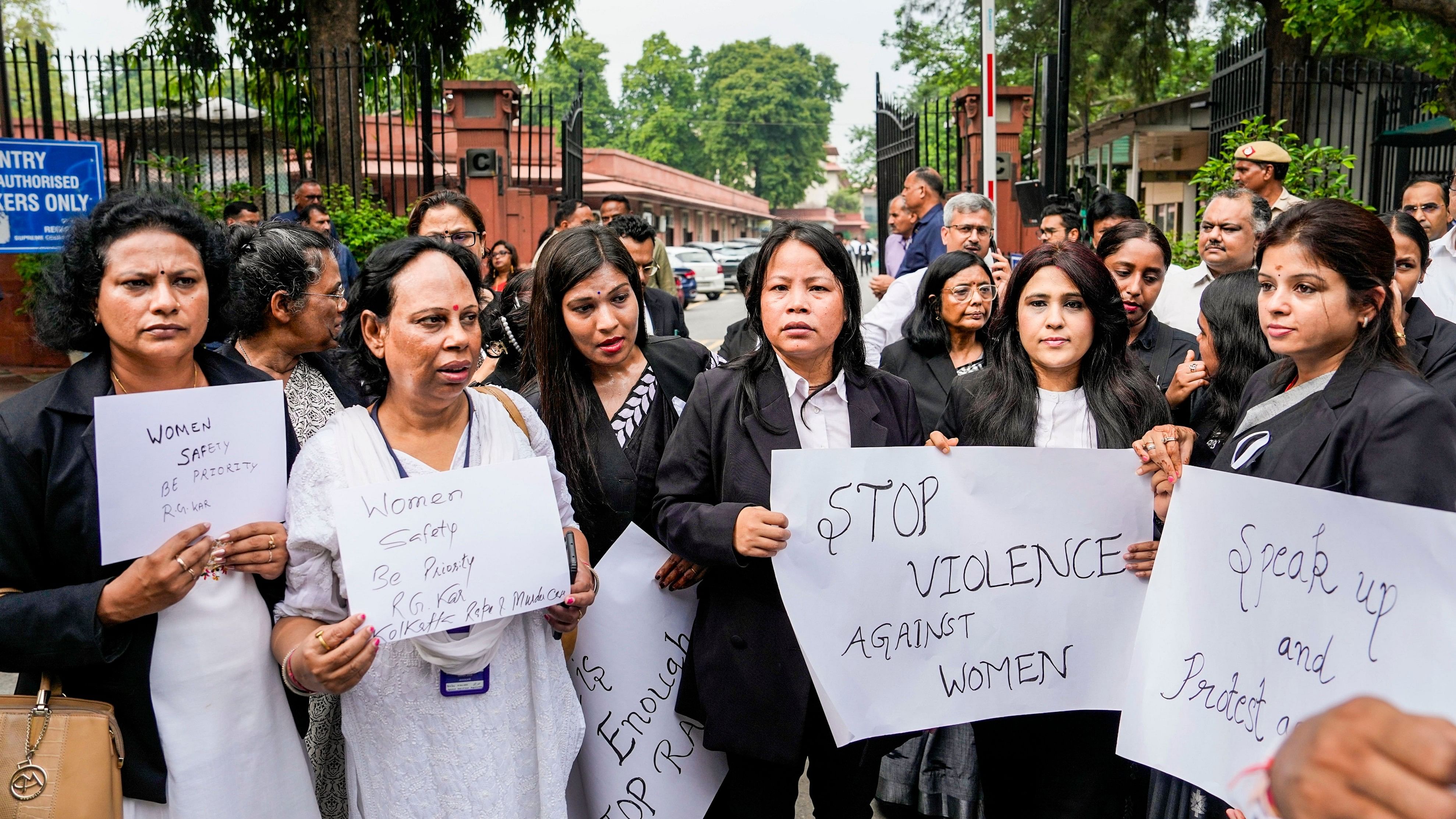
Members of the legal community take part in a protest march against the alleged sexual assault and murder of a postgraduate trainee doctor in Kolkata.
Credit: PTI photo
The Supreme Court has set up a national task force to recommend measures to address the safety and working conditions of medical professionals in the wake of the horrific rape and murder of a doctor in Kolkata earlier this month. It is a welcome move because, as the court noted, existing laws have not been able to stop sexual violence and deter the perpetrators. Indeed, no law, however stringent on paper, can by itself deter perpetrators of sexual violence. It is necessary to address the sources and enablers of violence and end them. The mandate of the task force is to go into all safety needs and frame measures for protection of all medical professionals from all sources of violence. The comprehensiveness of the mandate is good, but it should specifically address sexual violence against women in, and due to the nature of, institutional settings.
The conditions for what happened in Kolkata exist in workplaces across the country. The court noted the fact of hierarchy within medical colleges, that the career advancement and academic degrees of young professionals are capable of being affected by those in the upper echelons, and “the lack of institutional safety norms at medical establishments…” It said that female medical professionals are at particular risk in such settings as they are vulnerable to sexual harassment and violence from colleagues, seniors, and persons of authority. The existing law against sexual harassment was formulated on the basis of the Visakha guidelines and the Verma Committee’s recommendations made almost three decades ago. The court has noted that there are serious lapses in the implementation of the law. The task force needs to go beyond them and frame an action plan for organisations to deal with sexual violence in all settings and in all forms. Institutional norms, mechanisms and hierarchies that make women vulnerable to the power of others must be addressed.
Sexual violence is not limited to a place, profession, class or any other category. It is rampant across all kinds of workplaces and institutions. It may only increase as more women come into all professions. It cannot be countered and deterred only by making laws stricter on paper, as politicians clamour to do merely to assuage public opinion. That the Nirbhaya Fund, set up to promote initiatives for women’s safety, has not been fully utilised in any year since its institution shows that women’s safety is not exactly a priority for politicians and governments. That, in turn, is a reflection of society’s attitudes toward women as a whole. The societal prejudices and biases against women and entrenched patriarchal attitudes make sexual violence almost inevitable and give perpetrators a sense of impunity. The task force may not be able to address the larger social problem, but it must address institutional settings that impact women’s safety thoroughly. It consists of doctors, with bureaucrats as ex-officio members. It will do well to draw on the expertise of civil society organisations working for women’s safety.